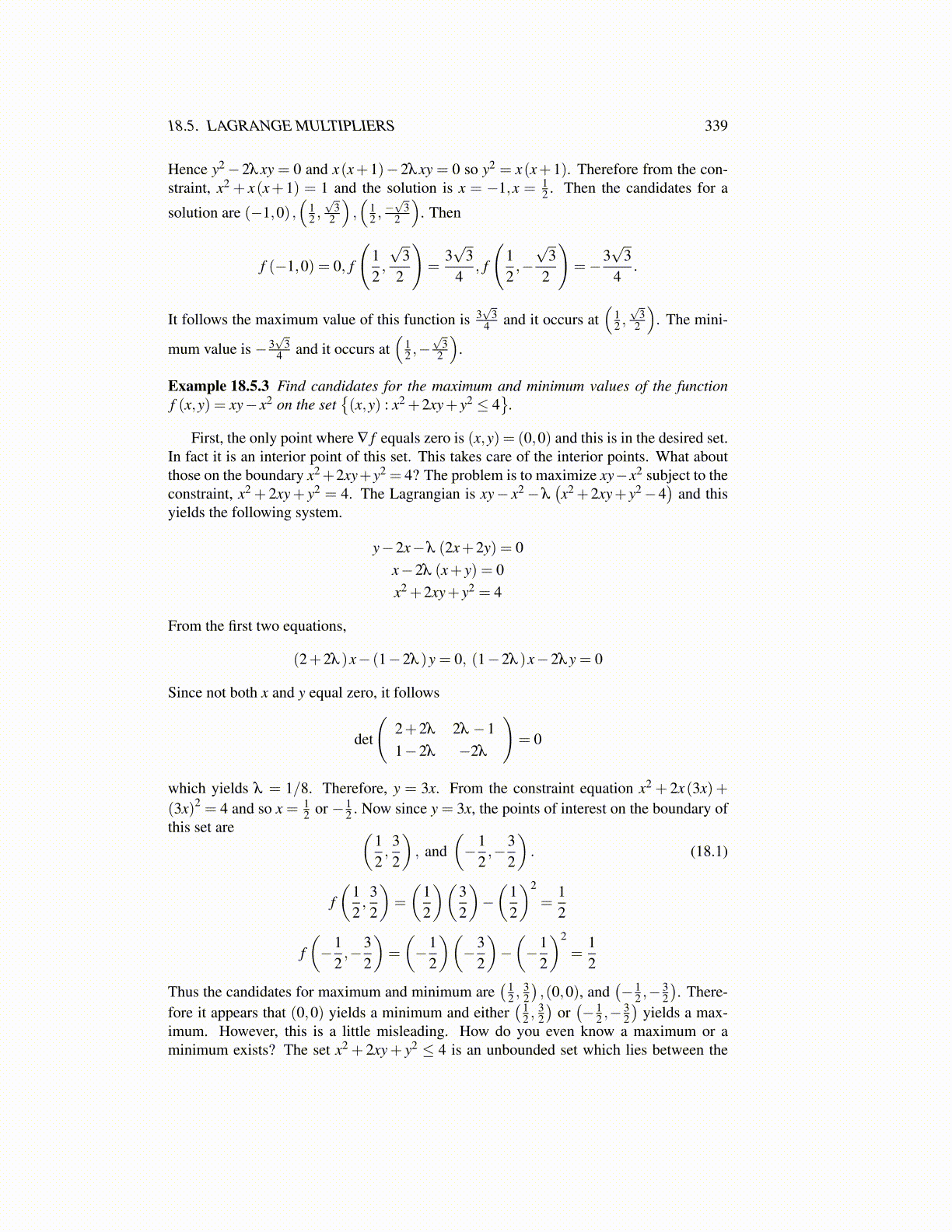
18.5. LAGRANGE MULTIPLIERS 339
Hence y2−2λxy = 0 and x(x+1)−2λxy = 0 so y2 = x(x+1). Therefore from the con-straint, x2 + x(x+1) = 1 and the solution is x = −1,x = 1
2 . Then the candidates for a
solution are (−1,0) ,(
12 ,√
32
),(
12 ,−√
32
). Then
f (−1,0) = 0, f
(12,
√3
2
)=
3√
34
, f
(12,−√
32
)=−3
√3
4.
It follows the maximum value of this function is 3√
34 and it occurs at
(12 ,√
32
). The mini-
mum value is − 3√
34 and it occurs at
(12 ,−
√3
2
).
Example 18.5.3 Find candidates for the maximum and minimum values of the functionf (x,y) = xy− x2 on the set
{(x,y) : x2 +2xy+ y2 ≤ 4
}.
First, the only point where ∇ f equals zero is (x,y) = (0,0) and this is in the desired set.In fact it is an interior point of this set. This takes care of the interior points. What aboutthose on the boundary x2+2xy+y2 = 4? The problem is to maximize xy−x2 subject to theconstraint, x2 + 2xy+ y2 = 4. The Lagrangian is xy− x2−λ
(x2 +2xy+ y2−4
)and this
yields the following system.
y−2x−λ (2x+2y) = 0x−2λ (x+ y) = 0x2 +2xy+ y2 = 4
From the first two equations,
(2+2λ )x− (1−2λ )y = 0, (1−2λ )x−2λy = 0
Since not both x and y equal zero, it follows
det
(2+2λ 2λ −11−2λ −2λ
)= 0
which yields λ = 1/8. Therefore, y = 3x. From the constraint equation x2 + 2x(3x) +(3x)2 = 4 and so x = 1
2 or − 12 . Now since y = 3x, the points of interest on the boundary of
this set are (12,
32
), and
(−1
2,−3
2
). (18.1)
f(
12,
32
)=
(12
)(32
)−(
12
)2
=12
f(−1
2,−3
2
)=
(−1
2
)(−3
2
)−(−1
2
)2
=12
Thus the candidates for maximum and minimum are( 1
2 ,32
),(0,0), and
(− 1
2 ,−32
). There-
fore it appears that (0,0) yields a minimum and either( 1
2 ,32
)or(− 1
2 ,−32
)yields a max-
imum. However, this is a little misleading. How do you even know a maximum or aminimum exists? The set x2 + 2xy+ y2 ≤ 4 is an unbounded set which lies between the